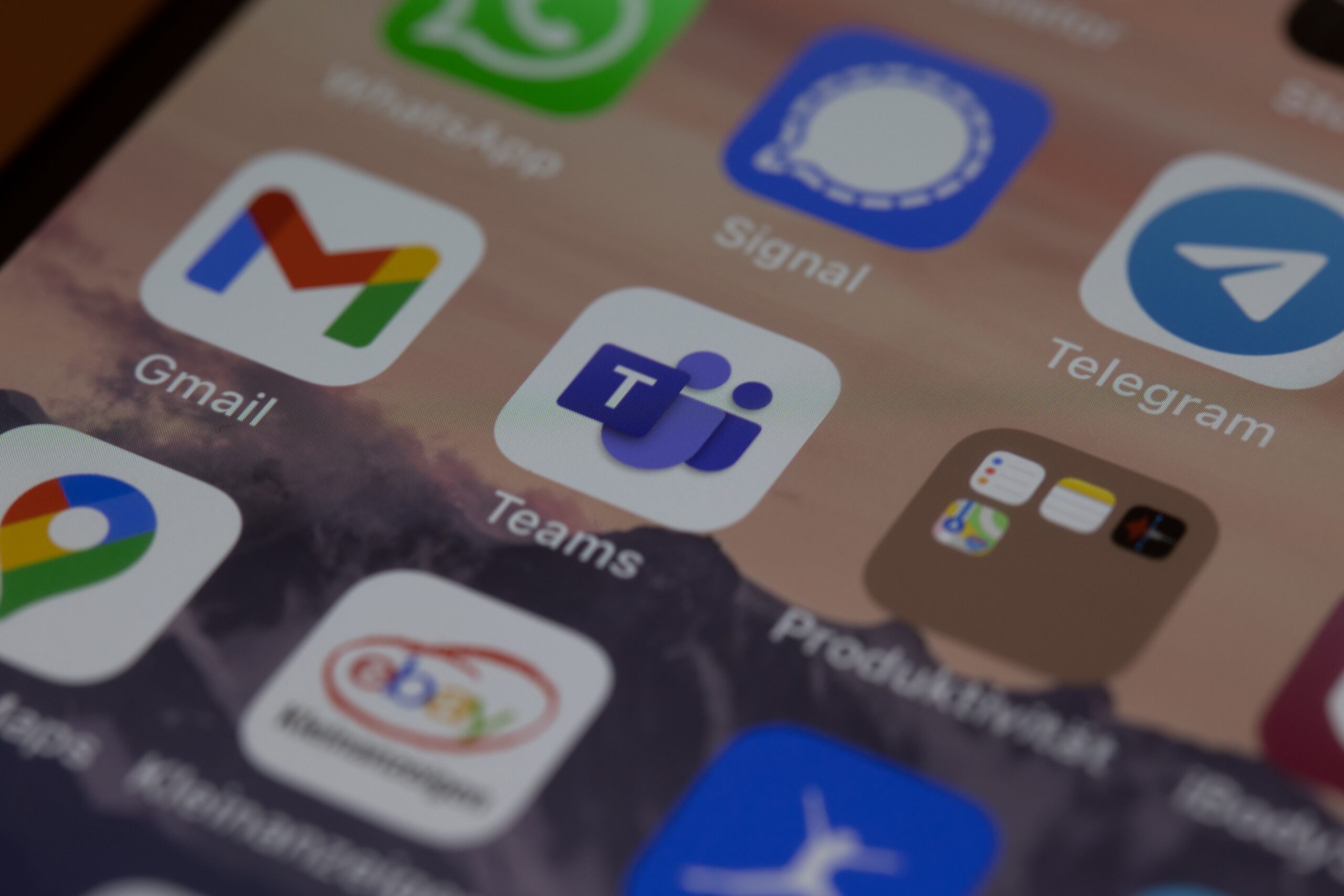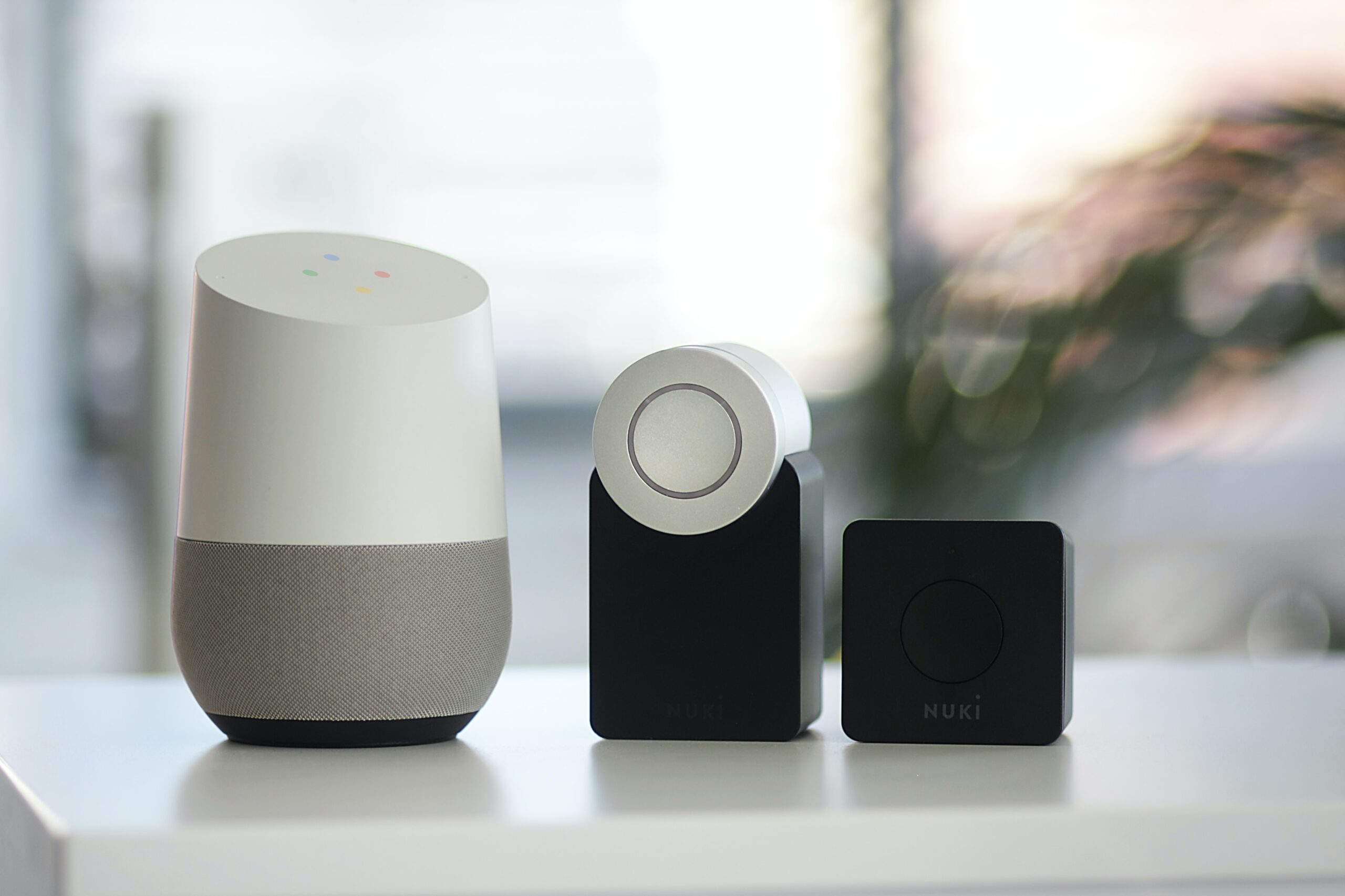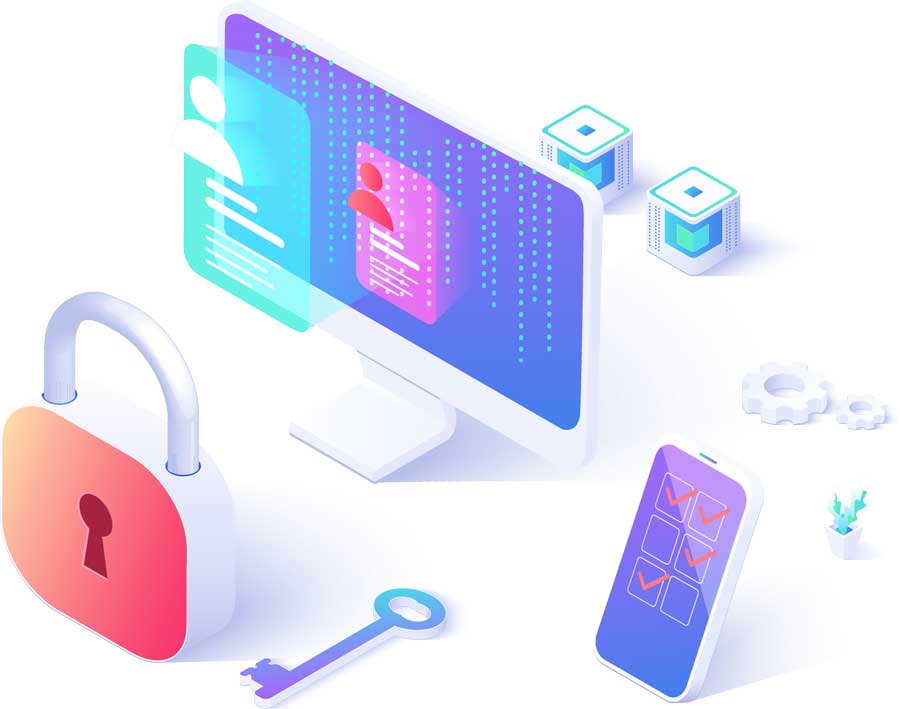Technology is reshaping the world of work at an unprecedented pace. From artificial intelligence to web3, from the metaverse to the hybrid work model. We are witnessing a series of technological revolutions. They are transforming how we communicate, collaborate, create, and innovate. Let’s explore some of the most impactful technology trends that are changing the way we work in 2024 and beyond. 1. Artificial Intelligence AI and Generative AI are not just buzzwords. They are transforming the workplace. These technologies enable automation, allowing teams to handle mundane tasks more efficiently. They free up human resources for more creative and strategic endeavors. AI is not a new concept, but it has become more powerful and accessible in recent years. This is thanks to advances in computing power, data availability, and algorithm development. Artificial intelligence is now augmenting and automating various aspects of work. This includes data analysis, customer service, image creation, product design, and more. But AI also poses significant challenges and risks. This includes ethical dilemmas, social implications, and workforce displacement. Thus, it’s essential to adopt responsible and human-centric approaches to AI. As well as ensure that workers have the skills and support to adapt to the changing nature of work. 2. Remote Collaboration Tools Advanced collaboration tools have facilitated the rise of remote work. These include video conferencing, project management software, and cloud-based document sharing platforms. This technology empowers teams to collaborate seamlessly from different corners of the globe. These tools break down geographical barriers, allowing for efficient teamwork and real-time communication. 3. Hybrid Work Model The hybrid work model is a term that describes the combination of remote and in-office work. This is not a new concept, but it has become more prevalent in the wake of the Covid-19 pandemic. The hybrid work model offers many benefits, such as: The hybrid work model is transforming the way we work. It requires workers to have new skills, tools, and strategies. For example, hybrid work requires workers to have several capabilities to work effectively. These include strong digital literacy, communication, collaboration, and self-management skills. 4. Web3: the Decentralized Internet Web3 is a term that refers to the next generation of the internet. An internet based on decentralized technologies, such as: Web3 aims to create a more open, transparent, secure, and democratic internet. One where users have more control over their own data, identity, and digital assets. Web3 also enables new forms of collaboration and value creation. This includes: Web3 is transforming the way we work. It’s creating new business models, platforms, and communities. These are designed to be more inclusive, participatory, and innovative. Web3 has the potential to generate $49.10 billion in economic value by 2030. 5. Internet of Things (IoT) in the Workplace IoT devices are creating smart and optimized workplaces. This includes smart thermostats that adjust office temperatures based on occupancy. As well as wearable devices that track employees’ health and productivity. This connectivity enhances efficiency and reduces energy consumption. It also provides valuable data for informed decision-making. 6. Augmented Reality (AR) and Virtual Reality (VR) AR and VR technologies are revolutionizing training, design, and customer interactions. In the workplace, AR and VR offer immersive training experiences. These allow employees to learn complex tasks in a simulated environment. These technologies are also used in product design. This enables professionals to visualize and modify prototypes in real-time. This drives faster innovation cycles. 7. Cybersecurity Advancements As digital technologies advance so do cybersecurity threats. Businesses are investing in advanced cybersecurity measures to protect sensitive data. As well as ensuring the privacy of employees and customers. These innovations include biometric authentication and AI-driven threat detection. Cybersecurity advancements are crucial. They help companies safeguard digital assets and maintain trust in the online workspace. The Impact on the Future of Work These transformative technology trends are not just fleeting novelties. They are shaping the future of work. Businesses that adapt and embrace these technologies gain a competitive edge. Remote collaboration tools foster flexibility and work-life balance, appealing to the modern workforce. AI and automation enhance efficiency, reducing errors and operational costs. IoT creates intelligent workspaces, enhancing employee well-being and environmental sustainability. AR and VR drive innovation, offering new ways to engage both employees and customers. Challenges and Considerations While these technologies bring immense benefits, they also pose challenges. Workforce training is essential to ensure employees can leverage these tools effectively. Additionally, there are ethical considerations about data privacy and security. As well as the impact of automation on employment. Striking a balance between technological advancement and human welfare is crucial. Especially in this transformative era. Let Us Guide You Successfully Through Digital Transformation Navigating new technologies can be complex. There are pitfalls that can waste time and money. Avoid this by working with our team of experts. We can help you customize your transformation to fit your business goals. Give us a call today to schedule a chat. —Featured Image Credit This Article has been Republished with Permission from The Technology Press.
Coolest Smart Gadgets at Europe’s Biggest Tech Trade Show (IFA)
Every year, tech enthusiasts eagerly anticipate Europe’s most prominent technology trade show. It’s the Internationale Funkausstellung Berlin, or simply IFA. This is a showcase of the latest and greatest innovations in consumer electronics. The show includes everything from cutting-edge smartphones to futuristic smart home gadgets. IFA never fails to impress. Let’s take a closer look at some of the coolest smart gadgets unveiled at IFA. As well as explore how they are shaping the future of technology. Samsung’s JetBot 90 AI+ One of the most eye-catching exhibits at IFA was Samsung’s JetBot 90 AI+. This intelligent robot vacuum cleaner takes smart cleaning to a whole new level. It uses advanced AI and sensors to navigate your home efficiently. It avoids obstacles and adjusts its cleaning patterns based on the room’s layout. It has powerful cleaning capabilities and a large dustbin. It’s an impressive addition to the world of home automation. Spatial Reality Display Sony introduced its Spatial Reality Display, which is nothing short of mind-blowing. This 3D display creates realistic, high-resolution 3D objects. They seemingly float in the air. It’s a game-changer for professionals in industries like design, architecture, and gaming. The technology has the potential to revolutionize how we interact with digital content. Philips Hue Gradient Lightstrip Philips expanded its Hue smart lighting range with the Gradient Lightstrip. This one is unlike traditional light strips. It features several colors that can synchronize with your TV screen. This creates an immersive ambient lighting experience. It can enhance your movie and gaming nights. It’s a fantastic example of how smart lighting can transform your living space. Bose QuietComfort 45 Headphones Bose introduced the QuietComfort 45 headphones at IFA. They deliver the signature noise-canceling technology that Bose is known for. These wireless headphones are comfortable for long listening sessions. They also offer exceptional sound quality and improved noise cancellation. They are a must-have for music lovers and frequent travelers. LG’s Rollable OLED TV LG unveiled its rollable OLED TV. It’s a marvel of engineering that can magically disappear when you don’t need it. With the press of a button, the TV screen rolls up and disappears into its base. It saves space and offers a sleek, minimalist look when not in use. This innovation heralds a new era of flexible displays. It also opens up exciting possibilities for interior design. When you’re ready to watch, it unrolls to provide a stunning 4K OLED display. It’s a glimpse into the future of flexible display technology. As well as how it can revolutionize home entertainment. Braun’s MultiQuick 9-Hand Blender with ActiveBlade Technology Smart gadgets aren’t limited to entertainment and convenience. They extend to the kitchen as well. An example is Braun’s MultiQuick 9-Hand Blender with ActiveBlade Technology. It caught the attention of culinary enthusiasts. Its unique blade design ensures more effective blending and chopping. It can make meal preparation faster and easier. Bosch’s Virtual Visor Bosch showcased its Virtual Visor, a revolutionary upgrade to the traditional car visor. The visor uses AI and a transparent LCD panel. It blocks out the sun’s glare without obstructing your view. It selectively darkens only the sections of the visor where glare is present. This provides enhanced visibility and safety while driving. This innovation promises a more comfortable and safer driving experience for all. TCL Wearable Display TCL showcased a wearable display that offers a personal cinematic experience. These glasses provide an immersive viewing experience with a large virtual screen. On a long flight or want to enjoy a private movie night? These wearable displays are a game-changer. Samsung’s SmartThings Hub At IFA, Samsung showcased its SmartThings Hub. This is an intelligent central hub. It connects and controls all your smart devices seamlessly. It acts as the brain of your smart home. And allows you to manage lighting, security, climate, and more. Its integration capabilities make it a standout choice. It will be of interest to anyone looking to build a truly connected home. Withings’ Sleep Tracking Mat Withings introduced its Sleep Tracking Mat. It’s a smart device that slips under your mattress. It monitors your sleep patterns, heart rate, and snoring. The gadget provides detailed insights into your sleep quality. It helps you understand your sleep habits better. As well as make adjustments for a more restful night. It’s a valuable tool for anyone looking to focus on their health and well-being. Let Us Help You Gear Up for the Future Smart gadgets are evolving. We’ve seen everything from intelligent home automation to innovative car accessories. These devices are shaping the future of how we live, work, and play. Gear up for the future—because it’s arriving faster than we ever imagined. Give us a call today to schedule a chat about leveraging smart tech at home or work. —Featured Image Credit This Article has been Republished with Permission from The Technology Press.
9 Smart Ways for Small Businesses to Incorporate Generative AI
There is no escaping the relentless march of AI. Software companies are rapidly incorporating it into many business tools. This includes tools like Microsoft 365, Salesforce, and others. Many people are still concerned about where AI will go. But there is no denying that it makes certain work more efficient. It can generate custom images on demand. Or write a company device policy draft in seconds. Staying ahead of the curve often means embracing cutting-edge technologies. Even if you’re a little wary about what the future holds. Generative Artificial Intelligence (GenAI) is unique from the AI of a few years back. It can create, innovate, and optimize. These functions have become a game-changer for businesses of all sizes. Leveraging Generative AI, small businesses can unlock a world of possibilities. This includes everything from enhancing customer experiences to streamlining operations. Have you felt bombarded with AI tool options? Unsure where to begin with leveraging it for your business? Let’s explore some smart and practical ways to incorporate GenAI. 1. Personalized Customer Experiences Generative AI algorithms can analyze customer data and preferences. Using these, it can create personalized experiences. 48% of customers expect specialized treatment for being loyal to a company. Some of the ways AI can help you improve customer experience include: These things help small businesses enhance customer satisfaction, fostering brand loyalty. 2. Presentations & Graphics Creation Generating a great sales presentation can be time-consuming. AI tools can automate this process. Microsoft Copilot is one of these. It can take meeting notes and prompts and create a presentation. Including images! Have you ever had trouble finding a promotional image? Tell Bing’s new AI tool what you need. You’ll get several options, tailored to your description. AI-driven platforms can produce relevant and engaging graphics. This frees up valuable time and saves money for business owners. 3. Chatbots for Customer Support AI-powered chatbots on websites and social media platforms are becoming commonplace. This is because they enable small businesses to provide instant customer support. Which is exactly what people expect these days. These chatbots can handle frequently asked questions. They can also assist with product inquiries and customer transactions. They help small companies provide round-the-clock help for customers. But without having to pay for extra staff hours. 4. Data Analysis and Insights Generative AI can process vast datasets to extract meaningful insights. Small businesses can use AI algorithms to analyze important data. Such as: These insights can inform strategic decision-making. Which helps businesses refine their offerings and marketing strategies. 5. Product Design and Prototyping AI in product design process allows businesses to explore many design variations rapidly. AI algorithms can generate prototypes and simulations. They do this based on specified parameters. This enables small businesses to visualize products before investing in physical prototypes. 6. Supply Chain Optimization AI can optimize supply chain operations. It can predict demand, identify inefficiencies, and suggest inventory levels. It takes away the human error component. As well as fees up teams from tedious administrative work. Small businesses can reduce costs and improve efficiency. AI automates a lot of the supply process. This helps ensure products are readily available when customers need them. 7. Dynamic Pricing Strategies AI-driven pricing algorithms can help companies make better pricing decisions. Pricing your products and services can be tricky. You don’t want to go too low or too high. AI helps businesses quickly analyze: These data insights help companies optimize pricing strategies. Small businesses can also dynamically adjust prices based on demand. This maximizes profits while remaining competitive in the market. 8. Human Resources and Recruitment Generative AI can streamline the recruitment process. The hiring process includes a lot of work reviewing resumes. Many candidates don’t make the interview stage. AI can help by analyzing resumes and screening candidates for you. It can even help with conducting initial interviews. Small businesses can find the best talent to drive their growth faster. 9. Predictive Maintenance Downtime on a production line is costly. Proactive maintenance is vital. It’s another area where Generative AI can help. The technology can predict maintenance needs based on data analysis. It helps businesses avoid costly downtimes. It proactively addresses maintenance requirements. As well as helps to ensure smooth operations. Unsure How to Get Started with AI at Your Business? Generative AI opens a world of opportunities for small businesses. It can also add to the complexity of a technology infrastructure. We can help you use it effectively and affordably. Give us a call today to schedule a chat. —Featured Image Credit This Article has been Republished with Permission from The Technology Press.












